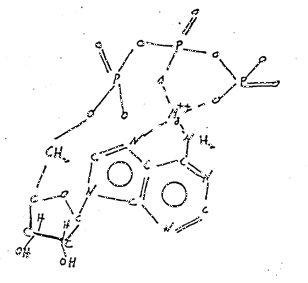Travis
Member
- Joined
- Jul 14, 2016
- Messages
- 3,189
Well, two pineapples have about 1.4 milligrams. This is about 96% RDA.
The calories of two pineapples is about 900.
1.4mg:900Cal
1mg:643Cal
This is a natural tropical fruit ratio. I would trust this ratio. This can be rounded to 1mg:666Cal, which is a convenient number and yields 3mg:2000Cal sugar.
Wikipedia says: Human storage of thiamine is about 25 to 30 mg. [...] The enzymes transketolase, pyruvate dehydrogenase (PDH), and 2-oxoglutarate dehydrogenase (OGDH) are all important in carbohydrate metabolism.
So we need it for three steps of sugar metabolism.
But people have been given up to 300 milligrams for months without any serious effects:
High-dose thiamine supplementation improves glucose tolerance in hyperglycemic individuals: a randomized, double-blind cross-over trial.
It appears to help clear (metabolize) glucose; this should be no surprise.
As a water-soluble vitamin safe up to 200x the RDA, I wouldn't be too concerned about a specific dose. Anywhere from 3 to 300 milligrams seems like a good place to start.
The calories of two pineapples is about 900.
1.4mg:900Cal
1mg:643Cal
This is a natural tropical fruit ratio. I would trust this ratio. This can be rounded to 1mg:666Cal, which is a convenient number and yields 3mg:2000Cal sugar.
Wikipedia says: Human storage of thiamine is about 25 to 30 mg. [...] The enzymes transketolase, pyruvate dehydrogenase (PDH), and 2-oxoglutarate dehydrogenase (OGDH) are all important in carbohydrate metabolism.
So we need it for three steps of sugar metabolism.
But people have been given up to 300 milligrams for months without any serious effects:
Twelve hyperglycemic subjects (10 cases of impaired glucose tolerance and 2 new cases of type 2 diabetes) completed this randomized, double-blind trial, where all participants received both placebo and thiamine capsules (3 × 100 mg/day) for 6 weeks in a cross-over manner. The main endpoint was changes in 2-h plasma glucose. Fasting plasma glucose and insulin, 2-h plasma insulin, the hemostatic model assessment of insulin resistance (HOMA-IR), renal function measurement and thiamin status were also evaluated at the commencement and completion of each treatment period.
RESULTS:
Thiamine supplementation resulted in significant decrease in 2-h plasma glucose relative to baseline (8.78 ± 2.20 vs. 9.89 ± 2.50 mmol/l, p = 0.004), with no significant change in the placebo arm. Fasting plasma glucose and insulin, and HOMA-IR increased significantly from baseline after 6 weeks in the placebo arm (p = 0.003, p = 0.04 and p = 0.02, respectively). These variables did not change with thiamine supplementation. There were no significant changes in 2-h plasma insulin or renal function marker, within or between arms.
CONCLUSION/INTERPRETATION:
Supplementation with high-dose thiamine may prevent deterioration in fasting glucose and insulin, and improve glucose tolerance in patients with hyperglycemia. High-dose thiamine supplementation may prevent or slow the progression of hyperglycemia toward diabetes mellitus in individuals with impaired glucose regulation.
High-dose thiamine supplementation improves glucose tolerance in hyperglycemic individuals: a randomized, double-blind cross-over trial.
It appears to help clear (metabolize) glucose; this should be no surprise.
As a water-soluble vitamin safe up to 200x the RDA, I wouldn't be too concerned about a specific dose. Anywhere from 3 to 300 milligrams seems like a good place to start.

